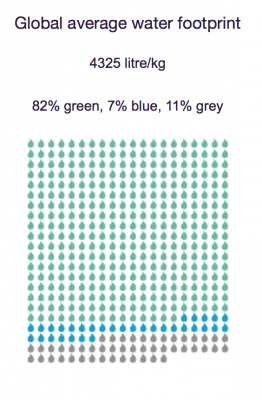Since posting last week about the water footprint of beef, I have not been able to get it off my mind. I took this week’s post as an opportunity to go a bit more in depth about the consumption of beef in the United States. An article I found discusses the shift of Americans from beef toward chicken consumption.
The graph shown below displays the peak of beef consumption in America during the 1970s, through the current decline of beef consumption per capita. During this 17 percent decline of beef consumption, greenhouse gas emissions decreased by 10%. As we can see, pork and poultry consumption have relatively stayed the same throughout this period of time. Though this means more chickens are being eaten, reducing the amount of beef consumed proves crucial to reducing our carbon and water footprint.

The article goes on to explain that the production of beef emits seven times the amount of greenhouse gases than chicken. Further, the carbon and water footprint of beef is roughly 20 times that of plant-based foods like beans.
The next graph shows that the production of chicken has increased by 5 times, while beef production has stayed consistent. This is partly due to the high demand for cheaper meats like ready to cook chicken. Beef takes longer to cook, making chicken an easier everyday option for most Americans.

Lastly, we should touch on America’s dietary footprint. Though we have decreased our consumption, beef still accounts for almost half of our dietary footprint. The final graph shows that American consumption of beef is not only one of the highest in the world, but actually four times the world average.

These trends all point to one thing: reducing our production and intake of beef will substantially decrease our carbon footprint within a single generation.



